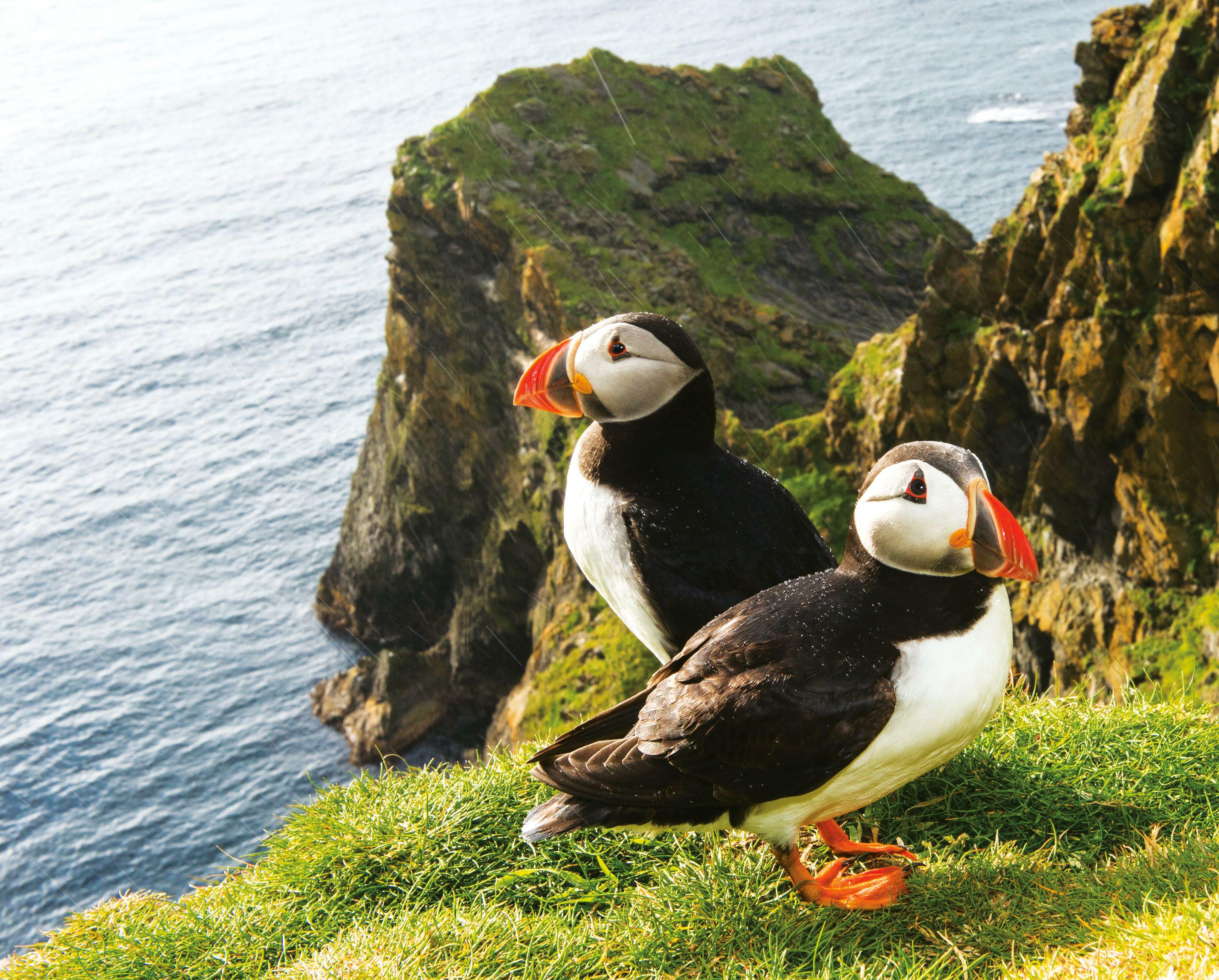
You don’t need to travel to the Serengeti in Africa or the Amazon rainforest in South America to find wildlife adventures. The British Isles are packed with wild treasures to discover. For example, the UK is home to more than 4,000 species of beetle and around 60–70% of the world’s global gannet population. Did you know that Britain has 700 square kilometres of rainforest? That’s enough to fill about 98,000 football fields. They provide handy habitats for wildlife rarely seen in other parts of the country, such as the rare chequered skipper butterfly and hazel gloves fungus found in the rainforests of western Scotland.
The UK’s location makes it globally important, too, with coastal islands and clifftops a main stopover point for millions of migrating birds, offering ideal spots to rest and feed. One of the most popular and recognisable of these is the puffin.
These black-and-white coloured seabirds arrive in their thousands every springtime to breed.
However, you may also have heard that nature has disappeared in the UK more than anywhere else in the world. Over centuries of farming, hunting and other activities, humans have wiped out a lot of Britain’s native wildlife.
The UK’s landscape can no longer support the wide variety of creatures and plants that once lived here. More than one in seven native species face extinction and Britain has lost almost half its biodiversity (the variety of plants and animals living in a particular place). Despite this, the UK is still home to an incredible variety of animals and plants, from basking sharks swimming in the deep to birds of prey flying up high. So come with us on an exciting journey through these wild isles.
This story is from the Issue 60 edition of The Week Junior Science+Nature UK.
Start your 7-day Magzter GOLD free trial to access thousands of curated premium stories, and 9,000+ magazines and newspapers.
Already a subscriber ? Sign In
This story is from the Issue 60 edition of The Week Junior Science+Nature UK.
Start your 7-day Magzter GOLD free trial to access thousands of curated premium stories, and 9,000+ magazines and newspapers.
Already a subscriber? Sign In

WE COULD BE HEROES
Meet the young people just like you who are doing amazing things to help save the world.

Space probe "touches" the Sun
NASA's Parker Solar Probe made history on 24 December 2024 with the closest-ever approach to the Sun.

Asel Sartbaeva
Meet the researcher whose work will save lives around the world.

Loch Ness Monster
Can new studies of Loch Ness finally unlock the secrets of Nessie?

Pangolin preservation
Meet the puppy protectors helping to save a threatened animal.

Mice wear VR goggles
Scientists at Cornell University in the US have built virtual reality (VR) goggles for mice.

10-year-old wins award
A woman who had bowel cancer is now cancer-free after receiving a liver transplant.

A life-saving liver transplant
A woman who had bowel cancer is now cancer-free after receiving a liver transplant.

Robot shoots hoops
A robot designed by Toyota Motor Corporation in Japan has broken the world record for the longest basketball shot by a humanoid robot.

SCIENCE SAVES THE WORLD
Space umbrellas, green sand and garlic milk... Isabel Thomas explores the boldest ideas and wackiest ways to fight climate change and fix the planet.